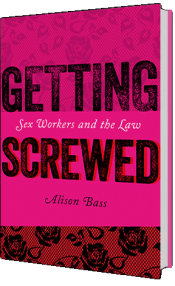I visited Miami yesterday, the first time I had been there in almost 30 years (except for a flight into Miami International Airport to pick up a rental car on our way to the Everglades). My friend and I went first to Little Havana, which seemed a bit more shabby than I remembered it from my years living in Miami in the 1980s. The banners outside the Cubaocho Museum were faded and a little tattered and a number of storefronts were shuttered, the victims, I suppose, of the pandemic’s crippling effects on tourism. But there were still old men (and now a few old women) playing dominos in Domino Park on Calle Ocho, and the restaurants and bars that line that historic street were bustling with people. My friend and I shared a delicious Cubano sandwich and some sweet plantains along with two mojitos at Old’s Havana Cuban Bar and Cocina, and then we headed to Miami Beach.
I was eager to see how South Beach had changed since I had covered Miami Beach as a young reporter for The Miami Herald in the 1980s. I had been there only once since then, to cover a medical conference (as a staff writer for The Boston Globe), but I hadn’t had the time then to really walk the strip and see how much had changed from the early ’80s, a time when South Beach was ridden with crime, boarded-up buildings, and developers eager to demolish the old art deco hotels to make way for concrete towers. The developers had most of city hall on their side, and indeed quite a few city officials were lining their pockets with the promise with remaking South Beach into the image of Brickell Avenue, the posh strip along Biscayne Bay littered with high-rise condominium buildings and hotels.
Only one woman stood in their way: a former New York publicist by the name of Barbara Capitman who had fallen in love with the streamlined curves, bright pastels and rounded windows of the art deco hotels from 1930s. Determined to save them from the wrecking ball, she somehow got South Beach designated as a historic district, much to the dismay of Miami Beach officials, and with some savvy public relations, she was able to preserve many of the whimsical hotels that lined Ocean Drive. As I relate in my memoir, Brassy Broad: How one journalist helped pave the way to #MeToo, Capitman died in 1990 before seeing her dream fully realized. But others took up the fight to save and restore the art deco district and South Beach eventually became what one writer called “America’s Riviera,” a striking oasis of beautifully restored hotels that attracted celebrities, models, and upscale tourists from around the world. And it remains a tourist attraction to this day, its sidewalks crowded with gawkers on the windy February day I was there.
Our first stop on Ocean Drive was the elegantly restored Cardozo Hotel, where, sure enough, I spotted a plaque in honor of Barbara Capitman in the creamy, brightly lit lobby. As we walked further south, I came upon Barbara Capitman Way, a block from the Victor Hotel, which was one of the first art deco hotels restored on South Beach. It was refurbished in the early ’80s by Capitman’s son, Andrew, who also restored the Cardozo Hotel. When I worked for The Miami Herald, I interviewed both Barbara Capitman and her son who at the time were distraught over the fires that destroyed the White House Hotel, one of the iconic art deco hotels on Ocean Drive. They were sure it was arson but the crime was never solved for reasons I discuss in my memoir. Two years later, Andrew Capitman sold his properties and moved back to New York and his mother died six years later. And yet she lives on in posterity, as the woman who made South Beach the seminal attraction it is today. As for the city officials who tried to stand in her way, I doubt anyone cares to remember their names.
This blog is also posted on medium.com.


